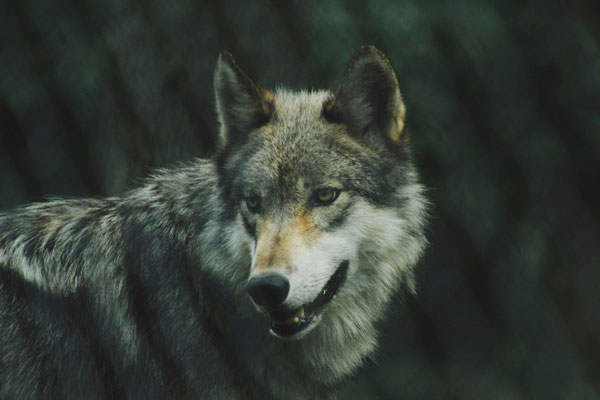Scientists resurrect dire wolves from extinction

[A dire wolf. Photo Credit to Unsplash]
On April 7th, the Colossal Biosciences company announced a scientifically life-changing endeavor—the resurrection of the once extinct dire wolf.
After being extinct for nearly ten millennia, these predatory canines were returned using gene-editing technology that allows for their genes to be replicated through a closely related species.
Colossal scientists combined the use of altered DNA from gray wolves with ancient DNA extracted from fossils found in Ohio and Idaho—a 13,000-year-old tooth and a 72,000-year- old skull.
These ancient fossils provided genetic maps of the dire wolves’ DNA, which contained the information about their genetic traits and genomes, enough to create a comprehensive blueprint.
Gray wolf DNA was then modified to resemble key traits of dire wolves, such as their large skull and jaw, thick coats, and light-colored fur.
A total of twenty edits were made to the genetic code of gray wolves in order to replicate the function and appearance of dire wolves.
Although no actual dire wolf DNA was used, Colossal claims that near-identical resemblance and behavior to dire wolves is sufficient to claim successful de-extinction.
The breakthrough resulted in the birth of six-month-old brothers Romulus and Remus, and their three-month-old sister Khaleesi.
News of the pups’ existence was released to the public along with the techniques that were used to enable the de-extinction, as scientists define the process.
Currently, the wolves are being raised in a 2,000-acre secure ecological preserve under 24/7 supervision by veterinarians and researchers.
Exposure to the natural ecosystem could be dangerous and unpredictable due to the dramatic changes that nature has undergone in the last 10,000 years.
Additionally, their predatory instincts could be harmful to the environment and to themselves.
“Dire wolves are very much the dominant species of canine during the Ice Age,” states Dr. Xiaoming Wang, Vertebrate Paleontology Curator at the Los Angeles County Natural History Museum.
For now, they are being studied in a secure enclosure that offers them plenty of space and food for growth.
These resurrected direwolves are proof of the first step into a new era of technology where de-extinction is possible and growing.
Colossal scientists have announced that they plan to use this research to investigate how to extend the de-extinction process to other species, such as the dodo, woolly mammoth, and Tasmanian tiger.
In addition to restoring extinct species, this technology is also helpful in protecting currently endangered species.
For example, along with the return of the dire wolf, the company’s scientists are currently working on saving the red wolf—an endangered species threatened by habitat loss and hunting pressure.
The idea of de-extinction through genetic editing was once popularized in the film Jurassic World.
However, with its development in real life, a door opens to a wide variety of possibilities for the future regarding species restoration, saving endangered animals, and advances in biogenetics.
The creation of these dire wolves through advancements in technology demonstrates the potential to bring back extinct animals, and they may signal this new era and the progress to come in the future.

- Yubin Kim / Grade 11 Session 8
- Branham High School

![THE HERALD STUDENT REPORTERS [US]](/assets/images/logo_student_us.png)
![THE HERALD STUDENT REPORTERS [Canada]](/assets/images/logo_student_ca.png)
